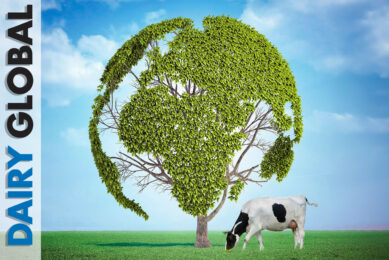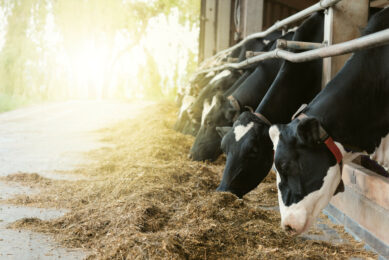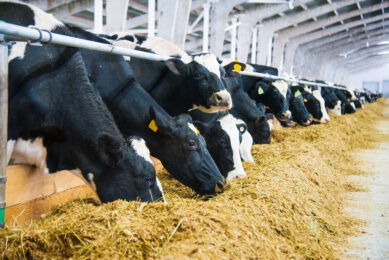Grazing behaviour: Why knowing your cows counts
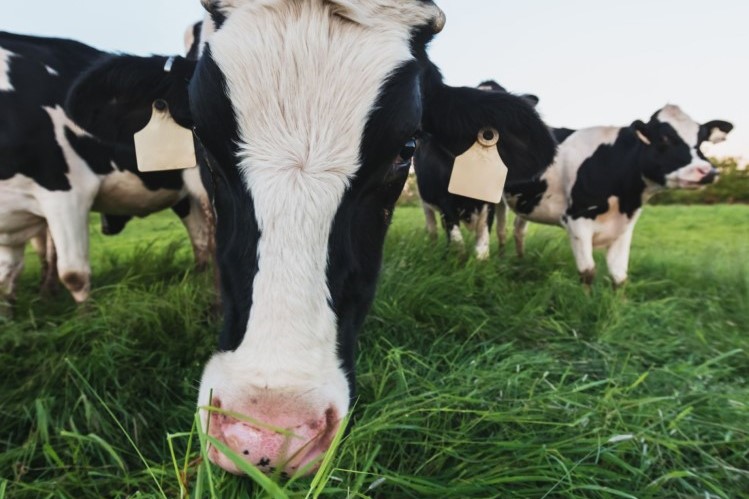
Knowledge of the normal behaviour and daily activities of dairy cows can be useful in 2 ways. Firstly, a behaviour change can indicate some fault in management or animal health; secondly, it may be possible to alter and improve the herd routine as a result of studying the pattern of behaviour.
Part of the art of breeding stock is careful observation of the behaviour of animals so that any abnormalities can be detected and remedial action swiftly taken.
Cows on good-quality pasture will walk about 1,600-3,000 m per 24 hours but will walk further, and intake will decline as the yield of pasture decreases. Intake can be maintained for a time when forage and thus bite size are limited by increased grazing time and the number of bites per minute.
However, as grazing time increases, more energy is used for activity and less for production, thus, the minimum grazing time that results in adequate dry matter intake is considered optimum. It is, therefore, advisable to offer the cows sward with an adequate yield of herbage (about 2,000 kg dry matter per ha) to ensure adequate intake and better performance with minimum distances travelled.
Response to plant maturity
If forage is too mature and coarse and low in nutritional value, cattle must spend more time grazing to get the nutrients they need. They may also have to spend a longer time chewing to break down this coarser feed for further digestion. At some point, they may not be able to eat enough (and will therefore lose weight) because of the excessive amount of time necessary for chewing. This is when they need more protein supplements to aid digestion and enable them to process the rough feed. It may not be necessary to provide a grain-based supplement, but good-quality alfalfa hay can provide the needed protein.
Effect of pasture size
For pastures of the same quality and plant maturity, it was shown that the size of the pasture available to the grazing animal will influence its behaviour, particularly the daily distance that it travels. In general, the bigger the area of pasture, the further an animal will walk. Cattle on a 12 ha pasture walked 2.6 km between 4.00am and 8.00pm, whereas similar cattle travelled 4.9 km on a 40 ha pasture during the same period and 8.9 km on a 258 ha pasture. There must be limits to this tendency at each end of the scale, but so far they have not been established.
Forage species
Cattle preferences may change during the day, such as eating legumes in the morning and grass in the afternoon. Two theories explain this. One is the difference in carbohydrate levels in grass, with more sweetness in the afternoon due to a longer period of photosynthesis and more time to store sugars.
A second thought is that cattle want something higher in fibre content (i.e., grass rather than legumes) late in the day to maintain more gut fill during the night so that they do not have to be up grazing when they would be more at risk for predation. Pastures with both forage species would then meet such requirements through grass feeding while taking the other nutritional advantages of legumes.
Response to air temperature
Air temperature is one of the most important factors impacting animal behaviour and is most commonly associated with cattle site-use preference. In temperate climate areas, the air temperature in summer can rise above the upper critical temperature limit and cause heat stress in livestock. Cattle need shade to ease thermoregulation under this condition, which can determine their location within the field. Therefore, shade is an important factor in determining the spatial patterns of grazing animals, particularly in summer.
Water source
The distance from water to a favoured site for grazing will influence the use of pasture. Animals will not only overuse a site near water but will also utilise less desirable kinds of plants rather than walk excessive distances to better feed. As a result, the area near the water location will be used more heavily than sites farther removed. The degree of use around a water source should not, therefore, be used as the key criteria in judging the condition or current degree of use of a pasture.
Feed supplement
Animal distribution in pasture can be altered by placing rewards such as supplements (e.g., feed or salt licks) in locations where greater utilisation is desired. This can modify livestock preferences for particular zones and change habitat-use patterns or distance travelled to increase the uniformity of foraging and restore grasslands.
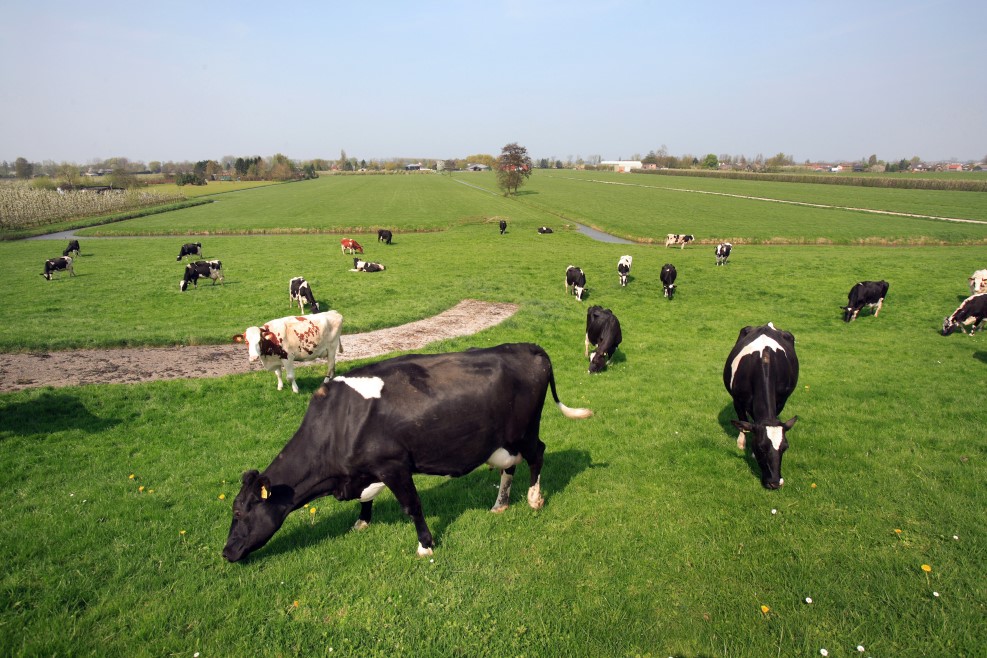
Behavioural response to fly attacks
Acute behavioral responses such as tail flicking, leg stomping, subcutaneous skin twitches and horizontal and vertical head movements may serve to temporarily relieve animals under heavy biting fly infestations.
These acute responses can disrupt normal grazing activities and are often implicated as a source of decreased animal performance due to increased energy expenditure and deterred energy intake. When fly insecticidal control methods are implemented, fly populations fall significantly and cattle tend to visit fewer feeding stations, likely due to reduced irritation and decreased time spent walking.
Painting cows with zebra-like striping may also be an effective means of controlling fly attacks. In a study conducted at Kyoto University, Japan, the total number of biting flies on the legs and body of zebra-like striped cows were almost half those on cows with black or white surfaces, as indicated by the fly-repelling behaviours per 30 min (39.8 versus 53.0). It was assumed that the odour of the painting lacquers might affect the landing behaviour of biting flies or that the motion detection systems flies use to control their approach and landing might be confused.
Fertilisation of pastures
Sodium fertiliser has been observed to increase the grazing time of dairy cows kept on pastures of restricted availability. Cows on pastures with sodium fertiliser also ruminated for longer, chewed faster, spent longer standing and less time lying and had longer drinking bouts compared to cows on pasture without sodium.
Further, the proportion of herbage that was rejected by the cows also decreased with sodium fertiliser. Similar responses were observed, but to a lesser extent, with potassium fertiliser. The changes in herbage composition with sodium or potassium fertiliser increase feeding and drinking by dairy cows grazing on low-quality herbage. The increase in feeding is achieved by increased bout number but reduced bout length, and the increase in drinking is achieved by increased bout length.
Conclusions
To optimise animal production under grazing conditions, animals should be able to graze the pasture effectively and efficiently. Having a good basic understanding of cattle grazing behaviour will help anticipate their interaction with the pasture and ultimately help improve grazing management skills.
References are available from the author upon request.
Join 13,000+ subscribers
Subscribe to our newsletter to stay updated about all the need-to-know content in the dairy sector, two times a week.




